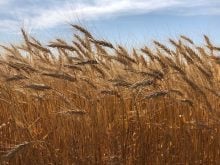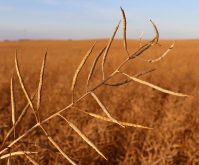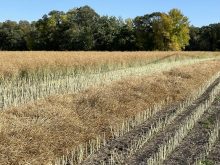Back in my university days, I had a part-time job conducting market research surveys on evenings and weekends.
“On a scale of one to seven, how satisfied are you with the flavour of x-brand toothpaste?” or “In the past month, have you heard any beer ads on the radio?” That kind of thing. It could be monotonous, but at the time it was an easy way to make money during the school year.
I did phone surveys in the late 1990s and early 2000s, before cellphones were ubiquitous and call display was still a rarity. In those days, people would answer their phones and tell you directly they weren’t interested before hanging up, occasionally using more colourful language.
Read Also

Sharing stories to promote Canadian farm safety
Personal stories can sometimes go farther than facts and data to promote safe practices on Canadian farms, Canadian Agricultural Safety Association conference attendees hear.
Now, it’s much easier to just send such calls to voice mail, or block completely, which I imagine must be at least part of the reason why Statistics Canada has tried to change how it compiles information.
StatCan released its first survey-based planting intentions estimates for the year on April 26, calling for increases in wheat and canola acres at the expense of oats and pulses. The numbers were generally in line with expectations, but the fine print on the methodology stood out.
The survey was conducted in December/January at the same time stocks data was collected, rather than in March when seeding intentions have always been queried in the past. Possibly linked to cost-cutting measures, the change was said to be part of an ongoing initiative into alternative methods of data collection.
StatCan has been working on model-based production estimates using satellite imagery instead of surveys for several years, although the jury is out on the accuracy of the results.
The actual acreage numbers will be adjusted in subsequent reports, but for now, the three-month window between asking the questions and releasing the results raises questions. While large acreage swings are unlikely, crop insurance information wasn’t even out yet when StatCan did its survey, and prices for many crops have also moved.
Strike
Since its start on April 19, the strike by federal workers represented by the Public Service Alliance of Canada has yet to have a significant impact on the data that market watchers like to keep an eye on. However, as the labour dispute drags on, the likelihood of disruptions to the flow of information grows.
The StatCan acreage report came out on time, while Agriculture and Agri-Food Canada released its monthly report on April 21, only two days after the strike started. Weekly Canadian Grain Commission numbers have not been updated on the CGC’s website, but its social media is still active, and the reports have been released there. All three agencies have put out notes warning that services may be affected.
World numbers
Looking abroad, data from countless private and public forecasters is constantly being updated, with some sources more trustworthy than others. One interesting thing to watch these days has been the numbers out of the Black Sea region.
Some official grain projections from Russia have shown considerable increases in wheat production estimates for the country on the year, which is bearish for North American prices. However, the question now is, how much of those estimates include grain being grown in occupied Ukrainian territory? On a scale of one to seven, the reliability of the data probably best ranks a four.















